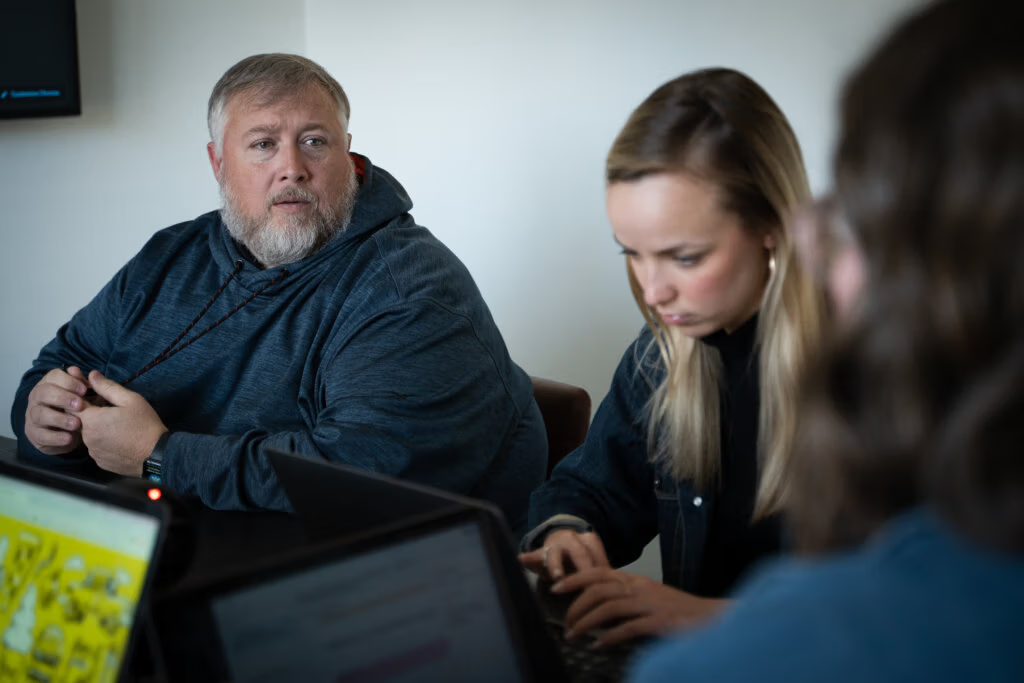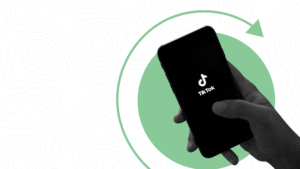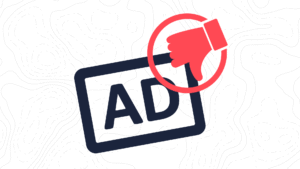If your primary means of advertising your business or organization is through social media, you’ve likely noticed continuously declining organic reach. Many people claim organic reach is dead, which is a bit of a glass-half-empty outlook, but they’re not far off. In July 2022 Instagram’s average organic reach was down 29% from the previous year. During that same time period, Facebook’s organic reach dropped from 10.43% to 8.6%.
The questions then arise, why is this happening and what should we do about it?
The History of Declining Organic Reach
When social media first hit the scene in the early 2000s your timeline consisted of posts made by people you follow in reverse chronological order so that the most recent post was at the top of the list. Facebook began receiving complaints about having to scroll to find relevant posts and thus the algorithm was born.
In 2007, Facebook implemented a new algorithm that took three key factors into account to decide what content to show its users. It looked at interactions, type of content, and speed at which the content lost relevancy. This meant that brands now had to fight the algorithm to produce the most relevant content so it would be seen. The great thing about this system was that if you interacted with a specific organization or business’s content then it would likely show up in your feed. However, this also meant that the algorithm would show these posts to your friends as well, assuming that you likely have similar interests.
After more complaints about irrelevant content, Facebook upped its algorithm game. The current algorithm looks at thousands of indicators. It then tries to make predictions about what each individual user will want to see. Facebook also now restricts non-boosted promotional content to around 5% visibility as it tries to prioritize organic authentic content.
How Should Your Business Respond
Now you’re thinking, “Thanks for the info Lauren but what does that even mean and what should I do about it?” I’m glad you asked! There are several things that we suggest to our clients and build into our strategies that help with fighting and increasing organic reach. The first and most obvious is to create an ad budget.
Create a Boost Budget
The obvious solution to declining organic reach is to not rely on organic reach. We encourage all of our social clients to have an ad budget not only to help fight against declining organic reach but also to help them reach their specific goals and grow their audience. Even if your content reached 100% of your audience 100% of the time it’s still advantageous to consider setting aside a portion of your ad budget for boosting your content.
Meta makes it very easy on both Facebook and Instagram to “boost” your posts. This is not exactly the same as creating an ad but is similar in that you pay a little money to get your content out in front of more people. Boosting a post is much simpler than creating an ad because the content is already there. All you have to do is determine your objective, choose an audience, pick a budget, and decide how many days you’d like the post to be boosted.
Boosting is budget friendly as you can boost for as little as $5 but you’re welcome to boost each post for as much as you’d like. You might want to know how big your boost should be to get the most bang for your buck, but unfortunately, there’s not a foolproof formula to this and it does take a little trial and error. One helpful feature Facebook has to help you choose a boost budget is its estimate menu that tells you approximately how many desired interactions you’ll receive with the money you spend.
We typically encourage people to take advantage of Facebook’s pre-made audience called “People who like your page and people similar to them.” The benefits of using this audience are twofold. One, it increases the number of your followers who will see your content and two, it introduces your content to potential new audience members who might be interested in what you’re doing.
While having a portion of your ad budget designated for boosting is helpful in increasing your reach, it’s not always possible for smaller businesses and organizations. Don’t worry though! There are other ways to help fight against declining organic reach.
Encourage Shares
Another way to help increase your organic reach is to have people share your content. When social platforms count your impressions and reach they include those that come from shared posts. For example, if Dogwood made a post about three ways to up your SEO game and it got 1,000 impressions on its own and then I shared it and my shared post got another 200 impressions then the total impressions on that post would be 1,200 impressions.
Another benefit of having people share your posts is that it introduced your content to a new audience. Per our previous example, the original Dogwood post only has the ability to be seen by those who follow our page, but once I share it, it now has the ability to be seen by all my friends/followers as well.
You can encourage these shares by asking employees, friends, family, and community members to share your content when they see it. You can also build in a call to action within your content that asks people to share (think YouTubers who ask you to “link and subscribe.”) Sometimes it might even be appropriate to incentivize those shares with a giveaway or other reward. Regardless, the best way to make sure your content gets shared is to create content that provides value to your desired audience.
Crosspost Your Content
One super simple way to boost your organic reach is to crosspost your content. What exactly do I mean by that? There are two types of crossposting that are helpful in boosting your organic reach: in-platform crossposting and cross-platform posting.
The most obvious example of in-platform crossposting is sharing your posts to your stories. Both Facebook and Instagram have a “story” function. When a platform has several ways that people can take in content (i.e. stories, reels, feed) there will inevitably be different people who gravitate towards one method or another. By posting your content in all the places it can be consumed you’re increasing the chances that people see your content organically.
One example might be posting a reel on Instagram and allowing it to also share to your feed. Once you’ve posted that reel you can then share it to your story. So no matter where someone prefers to get their content there’s a chance they could see yours. For an additional boost, you can even share your stories on both your Instagram and Facebook profiles.
The other type of crossposting that is helpful, with a few caveats, is to post your content to multiple platforms. The logic is very similar to crossposting within the same platform. We all have our personal favorites when it comes to social media platforms. By posting your content to different platforms you’re increasing the number of people who are likely to see it.
The caveat is, you have to be mindful of what type of content does best on each platform. For example, a carousel post made for Instagram won’t translate as well on Facebook because the images aren’t laid out the same way. Posting content to a platform where it doesn’t belong can do more damage than good. If you have the bandwidth to take your content and optimize it for each platform you use this is ideal. If not, just don’t post the things that don’t make sense to be on that platform.
Is Creating Content for Organic Reach Still Worth It?
With all that being said, is it really worth it to keep prioritizing organic content? I say the answer is yes as long as you’re not neglecting the other parts of your marketing strategy. The truth is, paid social and organic social perform different functions. Organic content helps to create trust between you and your audience by building customer relationships, driving brand awareness, and retaining existing customers. These functions are vital if you want your paid content to be successful.
As with all marketing strategies and tools, you have to understand how they work, what they do, and what to expect from them. If you are using organic social content and expecting to see leads increase exponentially, you might be disappointed. If you use organic marketing as a way to bolster your current client relationships, creating an environment that new followers coming from your targeted ads want to be a part of, you’ll experience the marketing magic.
If all of this sounds a little too complicated and you need help creating or executing a marketing strategy, reach out! We’d love to help your business navigate the ever-evolving landscape of digital marketing.


